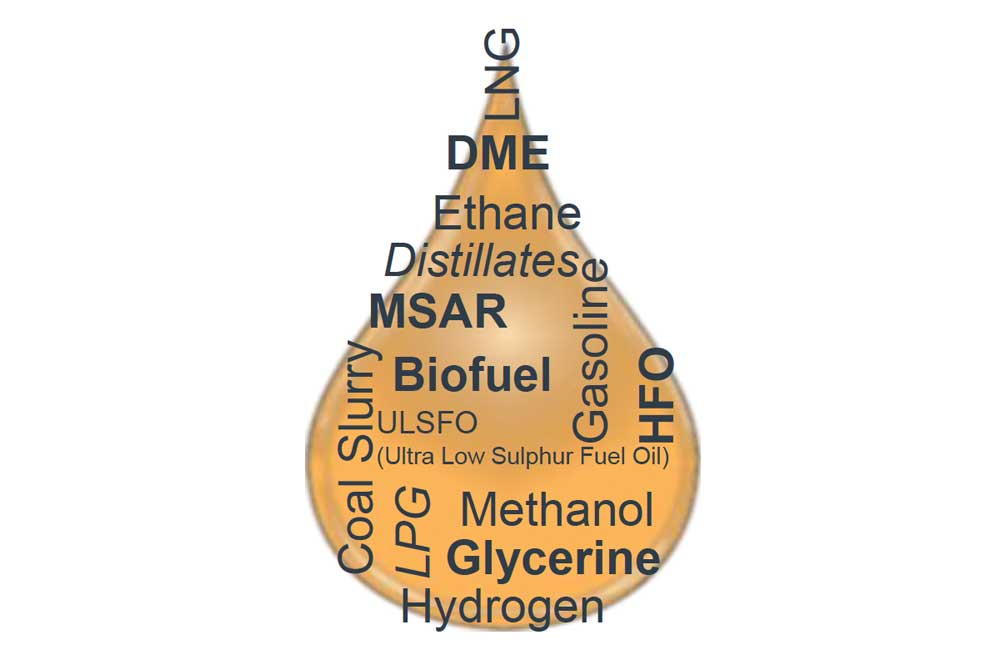The maritime sector is targeting a strong reduction in its CO2 and greenhouse gas (GHG) emissions. However, the industry faces a bigger question than what alternative fuel to opt for and that is whether alternative fuels alone are enough to meet the 2050 targets
The strategy is being driven by pressure from the regulators, public and the media. Achieving this is not simple and[ds_preview] we are trying to help the industry answer some of the pressing questions, particularly when it comes to the most promising alternatives to fuel for the maritime fleet in the short term, and to identify the long term barriers that will have to be overcome.
Moving from sulphur to CO2
At the start of the decade there were a host of promising fuels all jostling for position as the feedstock of the future for the maritime sector. At the time, the challenge was how to combat the problem of high sulphur fuel when the only viable option appeared to be low sulphur fuel, which was prohibitively expensive. The two alternative fuels that were leading the way at that time were liquified natural gas (LNG) and methanol, although others were already attempting to make a case in the form of liquified petroleum gas (LPG), ethanol, Di-Methyl-ether (DME), synthetic diesel, raps-methyl-ether (RME) and Bio oils.
Now a decade later the challenge of sulphur has been replaced by CO2. When it comes to short, regular trips such as ferries, battery powered ships are an optimum solution, provided the electricity is generated from renewable sources. But there are other options available to reduce GHG emissions in the form of biofuels, hydrogen and ammonia.
Barriers for alternative fuels
The first barrier is the availability. If a fuel is not readily available, we must produce it or we must obtain it from somewhere else. This is the case for hydrogen and ammonia. How we produce these fuels, or »energy vectors«, is an integral part of the way to decarbonization: their production processes must be based on renewable sources, or on carbon capture, to support the global sustainability of the entire cycle from production to final user. The lower emission, or the zero emission, from shipping (the user) shall not be jeopardized by the emission needed for their production.
There are three further barriers that need solutions in the form of safety, health impact and environmental impact. Obviously, these three are important to consider when you are looking for the optimum answer for an alternative fuel. The environmental impact is not always CO2, for ammonia it could be the nitrogen oxides that could be released in lack of additional abatement measures. When it comes to health considerations, ammonia is toxic, while on safety, hydrogen is explosive and highly flammable.
There are also technical hurdles that need to be overcome. Even if solutions are found on the safety and health issues of these potential alternative fuels, and they will be, to becomes an industry wide solution will require a global supply chain, something that none of these fuels have at present. Ships travel throughout the world so the logistics chain must be able to meet that demand wherever the vessels are. We have seen the bunkering shortages suffered with the LNG supply chain. However, when we consider new fuels it cannot just be for the marine sector, it must have a wide appeal otherwise it will be prohibitively priced. The marine industry is only one part of the global driver for decarbonization so there cannot be a special fuel that is only suitable for the marine industry.
A prime example of this multi-sector demand comes from Germany where they are following a plan to reduce the emissions by using hydrogen that will be imported from Australia. If this plan comes to fruition, hydrogen will become one of the fuels that works for the logistic chain and be cost effective because cost is related to the availability. The logistic chain, the technical solution and cost all go hand in hand.
Overcoming public sensitivities
Aside from these barriers there is another hurdle to overcome, and some would say more fundamental, in the form of social perception. Take LNG; it is true that its use can reduce emissions compared to diesel but to some the perception is that the having LNG on board could be much more dangerous than having diesel.
It is not hard to imagine the social concerns about highly explosive and flammable hydrogen or a toxic fuel like ammonia. Another thing that is particularly important is that ammonia is not like hydrogen and LNG, in that they are not toxic and are odourless. So, it is important that all these things are taken into consideration and relevant issues are technically solved in advance when a strategy is developed for alternative feedstock for the maritime sector and beyond.
A further barrier for both hydrogen and ammonia is their ratio energy/volume, with both fuels exceptionally low in this ranking. Ammonia needs to be three times the volume of today’s marine gas oil and this could have an impact on the layout and capability of the vessel. This is a prime reason why alternative fuels alone cannot be the entire solution.
Working alongside the move to an alternative feedstock we need more efficient fleets allied with a change in operational habits. The greater the fleet efficiency the more we can reduce the quantity of fuel that is required to be carried. Along with this it requires considerable change in some current operational habits. Examples of this are bunkering schedules and the operational speed of vessels. It is through a combination of these measures (alternative fuel, efficiency improvement and amended operational patterns) that can put the marine industry in a position to reach the target in 2030 and beyond.
Using LNG as a transition fuel
However, despite all the options and barriers, hydrogen and ammonia are possible solutions to achieve the 2050 target. It will need to be deployed in tandem with improvement in the performance of the fleet. But in the short term, the window up until 2030, hydrogen is not a viable option. There is no possibility of the global maritime fleet transitioning to hydrogen in that time frame or indeed the logistical infrastructure being put in place. However, the need to decarbonise the shipping fleet is pressing and so the interim solution will be LNG or even better Bio LNG. This will be a transition fuel that moves the sector along the path to a low carbon future, reducing emissions until the age of hydrogen is ready to take over the mantle.
Andrea Cogliolo, Marine Senior Director, RINA



















